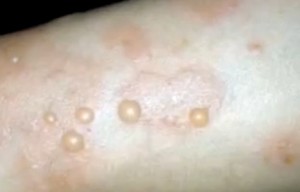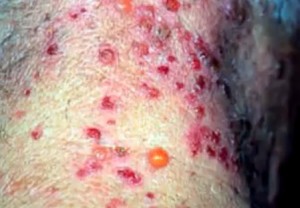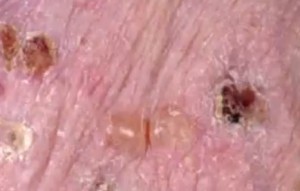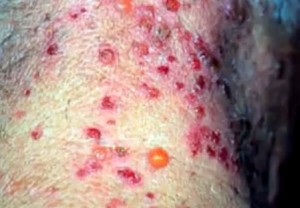Bullous pemphigoid is a rare skin condition characterized by the appearance of blisters of different sizes on the skin. The cause of the manifestation of these blisters is not clear, but theory states that the illness has something to do with the abnormal immune system of the person affected. The immune system that functions to attack any foreign matter that would invade the body would abnormally assault the body’s skin tissues and cells instead. This would result to the irritation of the skin and blisters of varying sizes would then appear. The reason as to why the immune system attacks its own body still remains unknown.
The blisters brought by bullous pemphigoid would usually appear large and filled with fluid and surrounded by smaller blisters. In some severe cases, the skin would develop numerous large blisters. The color of these blisters would range from pink to red. This condition usually affects elder people rather than the younger ones. Though the disease may seem unsightly, it is not contagious.
Symptoms of Bullous Pemphigoid
It is essential to know the different symptoms of the disease as this would greatly help in the proper and accurate diagnosis of the patient’s condition. Below are the common symptoms of bullous phemphigoid:
- Presence of bullae
Bullae refer to groups of fluid filled blisters of varying sizes. They may appear small but they typically come in great numbers. In more severe cases, the bullae would appear large and much more unpleasant to look at. The blisters are also covered or surrounded with a scaly rash.
- Intense itch at the site of the bullae
The person affected would constantly feel a burning sensation on the skin, most especially on the region where bullae are present.
- Mouth sores
Mouth sores as well as gingivitis and bleeding of the gums could also occur in some cases. The oral cavity also becomes more sensitive to spicy and salty foods.
- Nosebleeds
Some cases had also reported effects on the inner part of the nose, which resulted to bleeding from the nose.
The presence of blisters is usually localized on the arms, legs and on the back of the affected person. However, they may also occur in other areas, such as the face and the groin.
Bullous Pemphigoid diagnosis
The patient’s physical appearance and other symptoms are very useful in the diagnosis of the disease. Along with the physical assessment, other diagnostic tests are likewise employed to confirm the condition. Some of the common laboratory tests that help determine bullous pemphigoid include blood exams and skin biopsy.
Bullous Pemphigoid treatment, management
At present, there is still no cure for bullous pemphigoid. There are only drugs and techniques that aid in controlling or managing its symptoms. Medicines such as the antibacterial Dapsone and the glucocorticoid Prednisone would significantly help in alleviating the symptoms of the condition. Imuran, which is also widely used for this condition, is an immunosuppressant that is utilized to mainly control the immune system from attacking its own body. However, these medications can give serious side effects. So it is necessary for the person affected to have monthly visits to his or her doctor where blood work and tests are conducted in order to assure the safe condition of the patient.
Itching is a common symptom for bullous pemphigoid; however, scratching could cause the blisters to erupt. When this happens, bacterial infection could occur. In case a blister breaks, the application of topical antibacterial drugs is advisable. Chemotherapy is also helpful with regards to the suppression of the immune system. Some doctors would resort to this treatment option. A combination of tetracycline and niacin has also shown to have strong therapeutic effects.
But for intensely severe cases, corticosteroids are recommended instead. These medicines are given either by mouth, by injection or topically. Injection is usually utilized for worst conditions of bullous pemphigoid. Still, researchers at present would rather recommend the use of topical corticosteroids applied all over the body. This has shown to have a better margin of safety with regards to the health of the patient. Experts recommend that topical corticosteroids should be the treatment of choice especially for the early onset of bullous pemphigoid. Oral and intravenous medications should be avoided as much as possible and must be utilized for severe cases only
Bullous pemphigoid is a severe type of skin disorder that still has no known cause. The best thing to do when the condition occurs is to immediately seek the doctor’s help. This is especially true if you suddenly develop some blisters with no known origin or if you have a rash that doesn’t seem to go away even after application of some medications. Though bullous pemphigoid has no cure yet, there are medicines available that would help in alleviating the symptoms of the condition. In most of the cases, this skin condition just goes away on its own after a year or so.
Bullous Pemphigoid pictures



